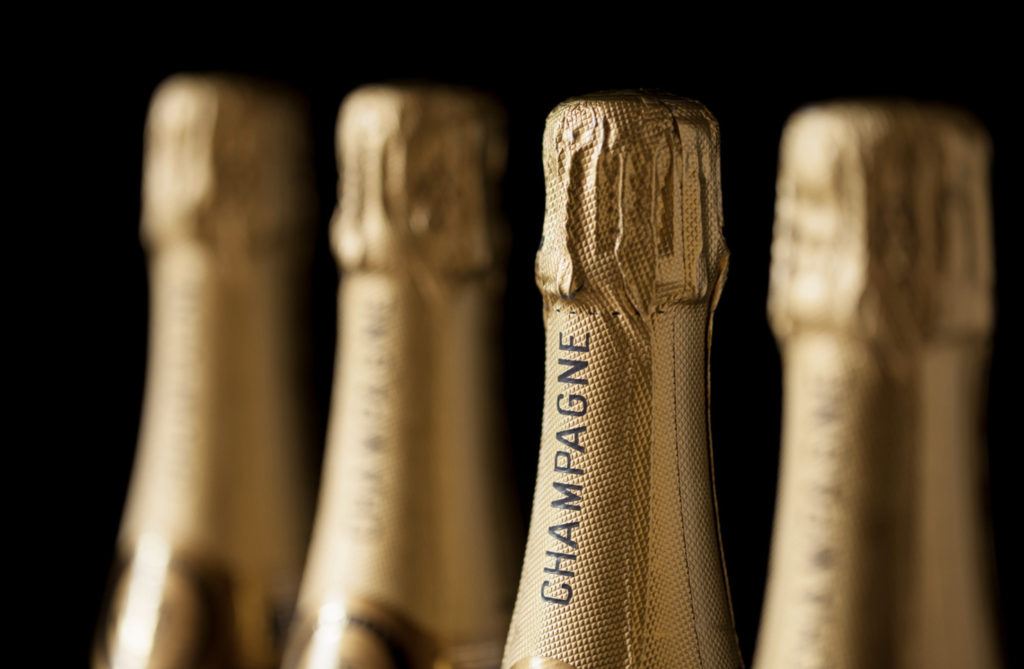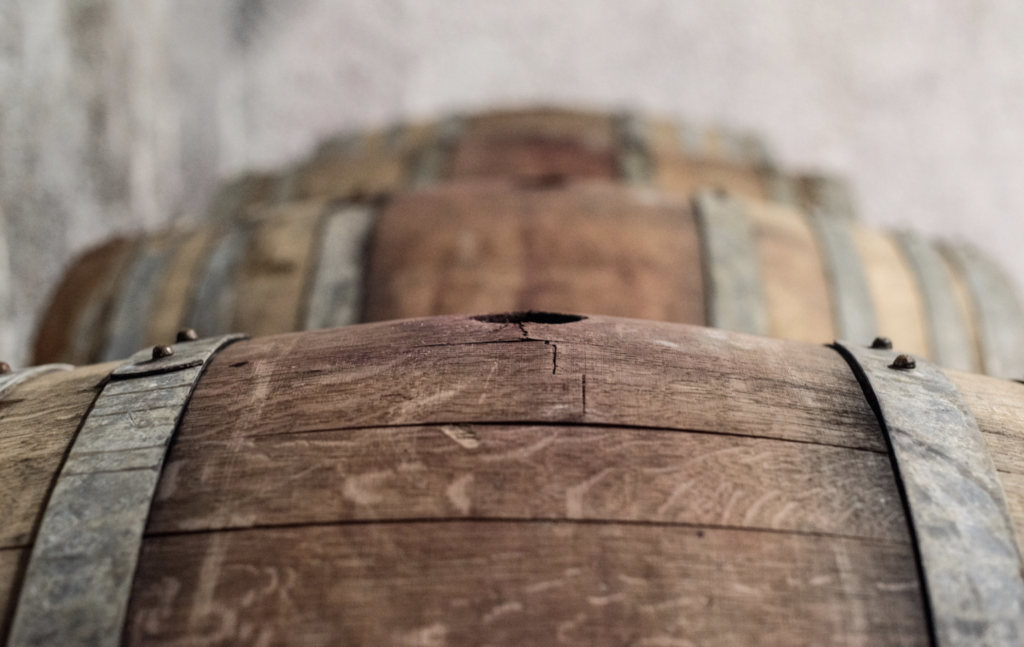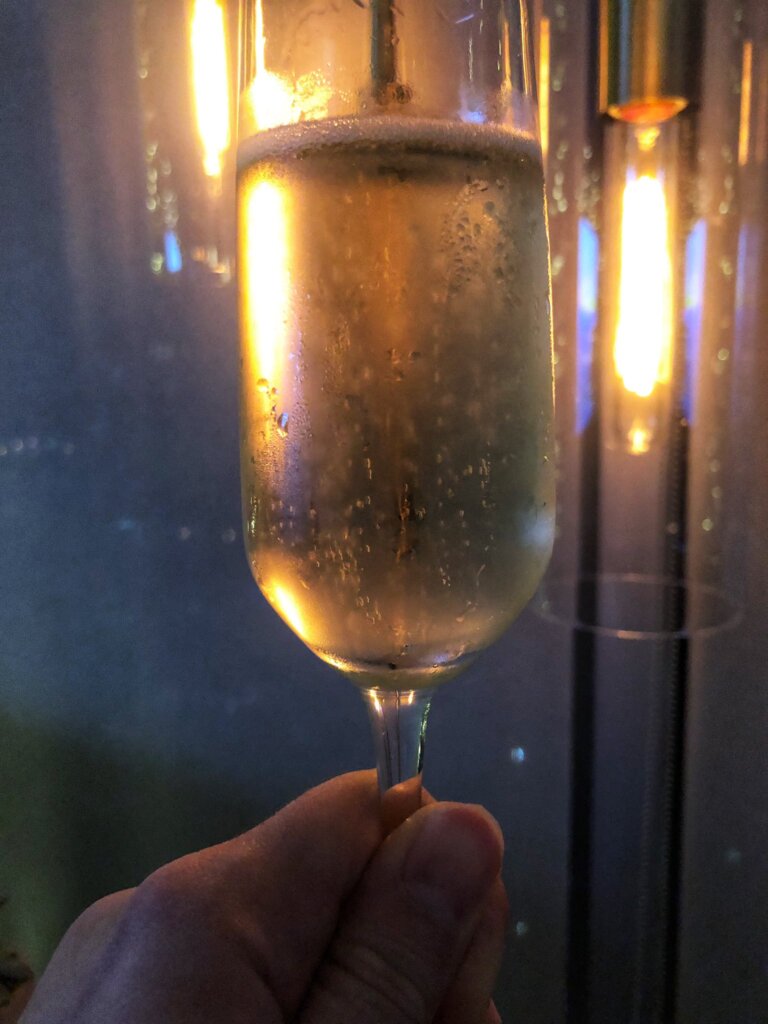What Does Champagne Taste Like? Styles, Flavors, & Sweetness

According to Dom Perignon, Champagne tastes like “the stars.”
The story goes that upon first tasting Champagne, Dom Perignon said, “Come quickly, I am tasting the stars!”
In reality, Champagne aromas and flavors vary according to several factors – the producer, the vintage (how ripe the grapes got prior to harvest), the blend, and how long it is aged – to name a few.
Typically, Champagne is said to have flavors of lemon, apple, and pear, along with yeasty brioche notes and a distinct minerality.
ChoiceWineries.com is reader-supported. When you buy through the links on our site, we may earn an affiliate commission. Visit our disclaimer page for more information.
What is so Special about Champagne?
Champagne is a sparkling wine that is only produced in the French region of Champagne. While this same style of sparkling wine is made around the world, it can only be labeled Champagne when it is produced in the region of the same name. See out tours of Champagne here.

How is Champagne made?
Champagne is made in what is called the traditional method. This method includes a second fermentation (the cause of those delightful bubbles), which takes place in the bottle, rather than in a large tank.
There are several steps involved in the production of Champagne.
It starts by creating, a still, dry base wine.
In Champagne, rules governing the varieties of grapes which can be used to create true Champagne exist.
Chardonnay, Pinot Noir, and Meunier make up the overwhelming bulk of the grape varieties used in the production of Champagne. However, Arbane, Petit Meslier, Pinot Gris, and Pinot Blanc are also approved by the AOC (Appellation d’Origine Contrôlée) for use.
Most commonly, still wines are made for each variety and then blended together. While blends are the most common style, single varietal grape Champagnes are also produced.
Furthermore, the base wine may be aged in oak for a period of time before bottling.

Next, the wine is bottled and undergoes a second fermentation. The bottle traps the CO2 caused by that fermentation, creating bubbles.
The wine then ages on the lees (lees are the leftover yeast cells post fermentation). The lees give the wine a creamy texture and flavors of yeasty bread, biscuit, and brioche.
A final dosage is added, which determines the sweetness level, and the wine is ready to drink.
The process described above, the specific grapes used, the use of oak, amount of time spent aging on the lees, and dosage are all important factors in creating the final style. Most Champagne producers have a house style that they are trying to create with each bottling.
What are the different types of Champagne?
Champagne comes in a number of styles, depending on different factors.
While typically a blend of Chardonnay, Pinot Noir, and Meunier, a Blanc de Blancs style is made solely from white grapes, while a Blanc de Noir is black grapes. Rosé Champagne is also produced and growing in popularity.

Most widely available Champagnes are non vintage (NV). This NV designation denotes that wine from previous vintages (year of harvest) may be blended in for added complexity.
On the other hand, Vintage Champagnes are only produced in the best years.
Finally, you might encounter a Prestige Cuvee, which is the Champagne producer’s most premium offering.
What are common tasting notes of Champagne?
Most Champagnes are on the dry side with high acidity and a fine mousse.
Common fruit aromas and flavors include citrus (meyer lemon, grapefruit) and orchard fruits such as green apple and Asian pear. If there is a high portion of Pinot Noir in the blend, flavors of white cherry and white plum can often be found.
Winemaking techniques also contribute significantly to the profile of Champagne. If the base wine spent any time in oak, additional flavors of vanilla and smoke may emerge.
Additionally, the amount of time the wine ages on the lees will impact how pronounced the yeasty, toasty notes are.
Finally, the final dosage determines sweetness. The sweeter the wine, the more candied the fruit flavors may seem.
How consistent is the taste of Champagne?
Most Champagnes are very consistent from year to year.

As mentioned, producers are after a distinct house style that helps the consumer recognize those particular wines. Producers are able to tweak the blend, the dosage, and incorporate reserve wines (for non vintage bottlings) to create that consistent style, despite vintage variations.
Grape ripeness is one of the biggest factors contributing to flavor. Just ripe grapes will have high acidity and those signature citrus and apple notes. However, ripe grapes will have more peachy stonefruit or even tropical characteristics.
In particularly warm years, producers may harvest earlier than usual to prevent overripeness and retain acidity.
Vintage Champagnes, on the other hand, tend to be the most distinct and have the most variation between different years, as they only contain the grapes from a single year’s harvest.
What can you expect from Champagne across different price points?
There is no question that Champagne can be pricey, but there are bargains to be found.
Try seeking out grower Champagne, which is Champagne produced by the grape grower (most large Champagne houses buy their grapes from growers) and is often a great value for very high quality.
A large producer’s standard NV offering provides consistency from year to year – you know what you’re getting when you open that bottle. These wines, which usually range from $40-$60, are meant to be enjoyed right away, rather than aged in the cellar for an extended period of time. These tend to be more about high acidity and fresh fruit flavors.
Typically, the more time the wine aged on the lees and in bottle prior to release, the more expensive – these wines offer a lot of complexity and are very elegant. These wines have more pronounced brioche notes, and often aromas and flavors from aging, such as dried fruits and nuts.
Also, some Champagne vintages have small yields, due to weather hazards such as frost, which typically causes a spike in price (good ol’ supply and demand).
Is Champagne sweet or dry?
Champagne is produced in a whole range of sweetness levels, from very dry to dessert-like.

There is a carefully constructed set of rules around sweetness for the region. That sweetness is determined by the final dosage, as previously mentioned.
Sweetness is measured in grams of sugar per liter of wine. The sweetness levels that you may see on a Champagne label are, in order from driest to sweetest:
- Brut Nature: the driest option, with no added dosage; 0-3g/L sugar
- Extra Brut: 0-6g/L sugar
- Brut: the most common category; 0-12g/L sugar
- Extra Sec: 12-17g/L sugar
- Sec: 17-32g/sugar
- Demi-Sec: 32-50g/L sugar
- Doux: the sweetest option, best enjoyed as an after dinner drink; 50+g/L sugar
Can Champagne taste sour?
Champagne is rarely sour, but it may taste acidic (like lemon juice), especially depending on the dosage.
A Brut Nature, Extra Brut, or Brut style wine is most likely to have bright acidity because the dosage is minimal. For these styles, adding a dosage is about balancing out the acidity without creating perceptible sweetness.
Champagne Buying Guide
Karen MacNeil (author of the The Wine Bible) offers 5 great tips to consider when purchasing Champagne…
- Be thoughtful with your Champagne style selection. If you’re having a tasting with friends, explore multiple styles (e.g. – Blanc de Blanc, vintage Champagne, Brut, etc)
- Figure out how much Champagne you need. Each bottle pours roughly 5 glasses.
- Have a Champagne stopper at the ready. This will keep an open bottle bubbly and fresh for several days. Here’s our recommended stopper from Amazon.
- Use tulip shaped glasses to create a long stream of bubbles and to allow room to swirl the wine. Check out our recommended Champagne glasses.
- Of course, have some snacks to pair with your Champagne. Cheese, salmon, or her personal favorite…potato chips!
See the full video from Karen below…
If you enjoy Champagne, what other sparkling wines should you try?
Lovers of Champagne should seek out other sparkling wines made in the traditional method. The fine mousse and brioche notes will be present, but the blend/grape varieties may vary from region to region, creating nuance that can drive interest and intrigue.
Wines to check out include Franciacorta from northern Italy, Cava from Spain, Cap Classique wines from South Africa, and any wines from the New World (Australia, New Zealand, California, and more) labeled traditional method.
Also, traditional method wines produced in France outside of Champagne are labeled crement, and those can be a great value compared to Champagne. Crements are produced throughout France, but common areas include Alsace, Loire, Limoux, and Burgundy.
Final thoughts on Champagne
Champagne is often reserved for special occasions, but the inverse can also be true – opening a bottle of bubbles makes the everyday special!

With high, refreshing acidity, fine, frothy bubbles, and flavors of lemon and apple, Champagne is one of the most food friendly wines out there.
Explore the different styles and producers to figure out what you like (I personally favor Blanc de Blancs because I enjoy the weighty mouthfeel of the Chardonnay) and then move on to traditional method sparkling wines from around the world.
Cheers!

Allison Sheardy came to wine as a second career in 2016 and has truly found her calling. She has created a niche for herself working in unique wine regions around the United States (Texas Hill Country, historic Livermore, CA, & Minnesota), where she specializes in hospitality for boutique, family-owned wineries. Allison is equally passionate about wine education. As such, she has earned her WSET Diploma in Wines and completed the French Wine Scholar program. Allison is currently pursuing her Master of Wine and teaches WSET levels 1-3.
